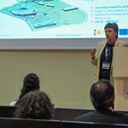
In collaboration with CDTI and Induciencia, the ALBA Synchrotron has organized a workshop at its facilities for companies who are specialised in scientific-technical equipment to inform them about the investment opportunities of the facility in the coming years.

Sodium-sulfur batteries are promising electrical energy storage technologies that can serve as a key solution to intermittency problems and can be integrated with renewable forms of energy generation. An international research team has reported the synthesis of micro-mesoporous carbon nanospheres with continuous pore distribution as an efficient sulfur host for sodium-sulfur batteries. The work sheds new light on the progress of the sulfur cathode in sodium-sulfur batteries and provides a promising strategy for the viable design of other metal–sulfur batteries. Experiments at the CLAESS beamline in ALBA allowed determining the sulfur species during charge/discharge processes.
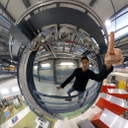
Coinciding with the celebration of the International Day of Light, the ALBA Synchrotron presents a new video with 360° technology that allows the public to make an immersive visit to the facilities of the synchrotron light source. Just by using 3D glasses or moving the cursor around, you can follow the explanations of our guides and look at the details as if you were physically in ALBA. This project has been developed with the collaboration of Fundación Española para la Ciencia y la Tecnología.
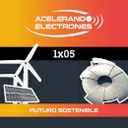
Listen now the 5th episode of the ALBA Synchrotron's science podcast, devoted this time on environmental science and sustainability.

The 8th of May 2012 BOREAS beamline hosted the first official experiment at the ALBA Synchrotron. The other Phase I beamlines started official experiments in the following months. We have organised a roundtable, inviting also a representation of the first user group, to remember that special day of ten years ago.
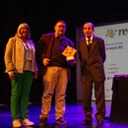
Our colleague from the Accelerators division, Pep Campmany, received the Recercat 2022 Prize by the Institut Ramon Muntaner last 7th of May.
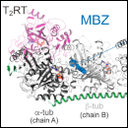
A team from the Margarita Salas Biological Research Center (CIB Margarita Salas-CSIC) has verified the efficacy of drugs, already used clinically, in virus infections such as SARS-CoV2, among others. The results demonstrate how these drugs, called MTAs, inhibit viral infection. They target microtubules, structures inside cells used by viruses for replication. The team used the ALBA Synchrotron to see how these drugs bind to the protein that forms the microtubules, obtaining a three-dimensional image of this drug-protein union. By adhering to it, the drug blocks the protein, preventing the formation of the microtubule and, therefore, the replication of the virus.
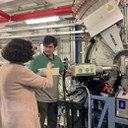
The 10th ALBA beamline is fully operational and hosted last week its first experiment from experts users. Researchers from the ICMAB-CSIC, involved in the CSIC PTI-Transener+, were studying different types of materials for batteries. NOTOS is co-funded by the European Regional Development Fund (ERDF).
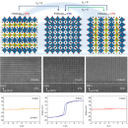
A team from Max Planck Institute has developed control of oxygen defects and magnetic properties in SrCoOx thin films via ionic liquid gating. XAS & XMCD spectroscopy at BOREAS beamline of the ALBA Synchrotron was used to characterise the resulting properties.
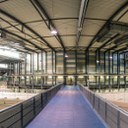
Till the 31st of May, undergraduate and Master students interested in doing an internship at ALBA can submit a proposal for covering one of the 16 available positions.

Altinco company uses the ALBA Synchrotron to improve the efficacy of its new product, which optimizes the pruning of different crop varieties. The results obtained at ALBA have enabled Altinco to characterize its product and thus facilitate its registration under the European Chemicals Agency.
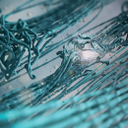
Researchers from Spain and the United States, in collaboration with ALBA, have developed a new structural model for polymer materials: the semi-paracrystallinity. The experiments performed at NCD-SWEET beamline were key to reveal the semi-paracrystalline organization of the polymers, which is of paramount importance for the further development of these materials in organic electronic technologies.
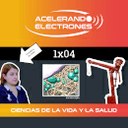
The fourth program of Accelerating Electrons, the ALBA Synchrotron science podcast, is now available! This time, we explore the synchrotron light applications in Bioscience.
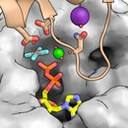
A study led by the Margarita Salas Center for Biological Research (CSIC) reveals the mechanism by which FtsZ filaments assemble and disassemble to allow cell division of Staphylococcus aureus, one of the deadliest antibiotic-resistant bacteria. Part of the experiment was done at the XALOC beamline of the ALBA Synchrotron.
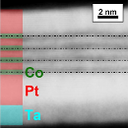
A study published in ACS Applied Materials & Interfaces studies the asymmetry of the magnetic proximity effect in both heavy metals-ferromagnetic-heavy metal trilayers and, for the first time, in multilayered systems. The study, that counted with the collaboration of the BOREAS beamline at ALBA, will provide useful guidelines to the design and production of advanced spintronic devices based on multilayered systems, with applications in information and communication technologies.

A recent work of the Universitat Autònoma de Barcelona (UAB) in collaboration with the ALBA Synchrotron, has studied the side effects of typical tooth whitening treatments, based on oxidation, compared to a new treatment developed by the authors through reduction. Results showed the whitening effect of the novel treatment to be highly improved in terms of application time needed, efficiency and safety, which makes it a promising candidate to develop novel whitening treatments. Experiments at the MIRAS beamline of ALBA helped to determine the chemical mineral modifications in the dental enamel.
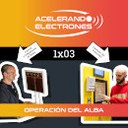
Listen now the third episode of the ALBA Synchrotron science podcast. We talk about the Control and Operation of ALBA.

The ALBA Synchrotron reaffirms its solidarity with Ukraine and strongly condemns the war. All relationships with institutions from Russia and Belarus are suspended, following the statement from the Spanish Ministry of Science and Innovation.
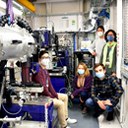
The ALBA Synchrotron and the Institut de Ciència de Materials de Barcelona (ICMAB-CSIC) are developing a new system to manufacture low-cost and ultrafast superconducting tapes (key in the field of green energy since they allow the transport and generation of energy in a much more efficient way). The NCD-SWEET beamline has recently hosted the first experiments. This project has received funding under the Recovery, Transformation and Resilience Plan and the NextGenerationEU funds.
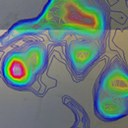
Led by researcher Tanja Ducic, beamline scientist from the MIRAS beamline at the ALBA Synchrotron, the live-cells study has revealed variations in the organic compounds of different glioblastoma cells and it confirms the efficacy of the riluzole drug against this type of cancer.

3Sbar (Surface Structure and Spectroscopy at 1 bar) is the name of the next ALBA beamline that will be extremely useful to provide answers to environment protection. 3Sbar is a unique instrument that will provide unprecedented insight on the understanding of fundamental processes in catalytic reactions. The project, funded by the Recovery, Transformation and Resilience Plan within the framework of the NextGenerationEU, will enter operation in 2026.

Together with the rest of LEAPS' members, the ALBA Synchrotron deeply condemns the war in Ukraine and hopes an immediate end to violence.

The second program of Accelerating Electrons, the ALBA Synchrotron science podcast, is now available!

A research led by the UAB has managed to emulate learning neuromorphic abilities using thin layers of cobalt oxide. The experiment, performed at the ALBA Synchrotron, is a new step towards brain-inspired computers.
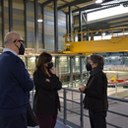
Accompanied by the General Director for Research, the Minister (Consellera) for Research and Universities from the Generalitat de Catalunya has visited today the ALBA Synchrotron, where she also held a meeting with the director, the manager and the honorary president of ALBA.
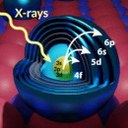
A multinational research project led by the Center for Quantum Nanoscience (QNS) in Seoul, introduced a method to measure the multi-electron states of isolated magnetic atoms. Among others, data obtained at BOREAS beamline in ALBA has been key for answering the question: which orbitals do the electrons occupy?
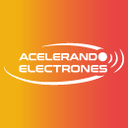
“Acelerando electrones” (accelerating electrons) is a new science podcast produced by the ALBA Synchrotron and Cugat Mèdia, with the collaboration of the FECYT. The podcast includes 6 episodes to explain what a synchrotron is, what its applications are and how ALBA everyday life is like. Don't miss “Acelerando electrones”, the fastest science explained slowly!
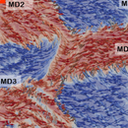
Researchers from the Physics Department of the Universidad de Oviedo, CINN-CSIC and HZB, in collaboration with ALBA, have explored the magnetic configuration of ferrimagnetic structures often employed to build modern spintronic devices and magnetic recording media. At the MISTRAL beamline of ALBA, using vector magnetic tomography, a magnetic trilayer fabricated at Oviedo was characterized. These findings will permit to generate precise physical models describing the magnetic behaviour of this type of systems and control and exploit them for the design of spintronics and magnetic storage devices.
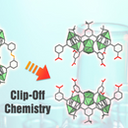
A study led by ICREA researchers and ALBA users Daniel Maspoch and Inhar Imaz has found out a novel approach to synthesise molecular structures that can allow material scientists to design and build a set of new materials. A crucial part of the experiment, the structural determination of the compounds, was performed at the XALOC beamline of the ALBA Synchrotron.
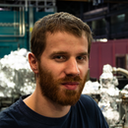
Last Friday, the ALBA-UAB PhD student Johannes Groen defended his thesis about the behaviour of a nanomaterial drug specifically designed to inhibit the collagen overproduction after a myocardial fibrosis event. The ALBA synchrotron light was crucial to observe the induced morphological changes in the affected cells. Groen’s results set the precedent for the development of pre-clinical studies of novel therapeutic agents.
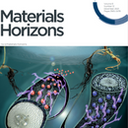
Researchers of the HyPhOE European Project have developed biohybrid plants with an electronic root system, which could be used to store energy or as electronic sensors. This study proved the integration of circuits and electrochemical devices into the plants without damaging them, so that they continued to grow and adapt to their new hybrid state. Experiments at the NCD-SWEET beamline of the ALBA Synchrotron were crucial to shed light on the plant-based technology field.
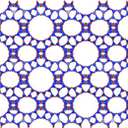
The new zeolite, named ZEO-1, shows a three-dimensional system of interconnected extra-large pores (around 10 Å), the highest observed in stable zeolites after 80 years of research. It could work as a catalyst in fine chemistry for the production of pharmaceutical intermediates, in controlled substance release, for pollution abatement or as a support for the encapsulation of photo- or electroactive species. Experiments at the MSPD beamline of the ALBA Synchrotron were key to determine the accurate structure of ZEO-1.
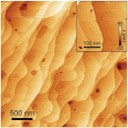
Scientists from the Max Planck Institute for Microstructure Physics, the ALBA Synchrotron and the Helmholtz-Zentrum Berlin have succeeded in creating a two-dimensional ferromagnetic material for the first time exhibiting an easy-plane magnetic anisotropy, i.e. an “XY class” of 2D ferromagnet. This is of fundamental relevance and was elusive so far, without discarding potential application in energy efficient information technologies. X-ray magnetic circular dichroism experiments at BOREAS beamline of ALBA first proved the ferromagnetic nature of the system, while further measurements at BESSY VEKMAG facility completed the demonstration of the XY universality class. The results have been published in the renowned journal Science.

Researchers of IQAC-CSIC, in collaboration with the ALBA Synchrotron, demonstrate that African hair has more lipids that are highly disordered. This distinction with Caucasian and Asian hair might be relevant to develop new ethnic hair-care products.

New opportunities for SMEs! TamaTA-INNOV project offers funded and confidential measurements in different European light sources for SMEs.
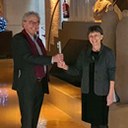
In the 18th LEAPS General Assembly, held in Barcelona on the 26th of November, Caterina Biscari handed the symbolic LEAPS baton over Lenny Rivkin, Deputy Director of the Paul Scherrer Institut (CH), who will be the new LEAPS chair as of January 1st 2022.

The UPC student Andrea González won the first prize in the Engineering Internship Excellence Contest held in Madrid for her work developed during her internship at ALBA. She contributed to improve the ALBA refrigeration system pumps shedding light on the cavitation problem that had affected the accelerator cooling capacity and the behavior of the distributor in the aspiration zone.
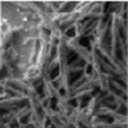
Researchers from the UCM and CSIC, in collaboration with ALBA, have established a novel synthesis protocol to produce a larger number of nanowires than conventional laboratory fabrication processes with considerably reduced production time and cost. The use of recycled aluminium and the fact that the nanowires growth process is performed at room temperature allows the nanowires to be used in industry at lower costs. CIRCE beamline from ALBA has contributed to the evaluation of the magnetic properties of the nanowires for application in permanent magnets.

Researchers from the IMDEA Energy Institute in Madrid have used the CIRCE-NAPP beamline of ALBA to study the artificial photosynthesis process, that is, the chemical reaction that plants and other photosynthetic organisms use to transform the Sun's energy into chemical energy. The goal of their research is to selectively control the products of the chemical reaction to obtain those that have industrial and energetic interest. At the CIRCE-NAPP station, scientists have analyzed the different reaction products based on the catalysts used.

In a ceremony held yesterday at the UAB Casa Convalescència, the ALBA Synchrotron was recognized by the "Amics UAB" association with an award addressed to institutions that work for improving the services provided at the Universitat Autònoma de Barcelona (UAB).
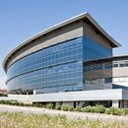
The ALBA Synchrotron has received 7.5M€ to start developing and prototyping the new accelerators' systems for transforming ALBA into a 4th generation synchrotron facility. These funds are part of the Recovery and Resilience Plan within the framework of the NextGenerationEU. Five new positions are open to hire specialists for working on this project.

The ALBA-UAB PhD student Nithyapriya Manivannan defended yesterday her thesis about the selenium biofortification of wheat. She studied the selenium plant uptake mechanisms and its interaction with pollutants using synchrotron analytical techniques. Thanks to the CLÆSS beamline of ALBA, different methods of biofortification of wheat roots, shoots and grains were studied without affecting the chemical nature of the samples. The results of Nithya's thesis will help society to access an adequate selenium intake to benefit human dietary needs.
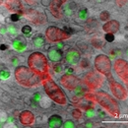
Experiments led by a PhD student at the ALBA Synchrotron revealed, for the first time, the location of a novel hybrid nanomaterial designed to inhibit the collagen overproduction after a myocardial fibrosis event and the induced morphological changes in the cells. Obtaining this high-resolution 3D information of cells is crucial for developing pre-clinical studies of novel therapeutic agents.
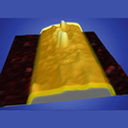
An international collaboration, led by the Autonomous University of Madrid, has studied the electrical properties of a few layers thick sheets of antimonen, a two-dimensional material composed of antimony atoms. The results indicate an electrical transport that occurs mainly on the surface of the material. This, coupled with its stability and simple structure, make it a promising candidate for nanoelectronic and optoelectronic applications. Part of the experiments were carried out at the CIRCE beamline.

The ACCC (Associació Catalana de Comunicació Científica) has recently held its 30th anniversary, where three initiatives were awarded as the best Outreach projects. Misión ALBA was one of the winners and the jury highlighted its capability to engage kids into science as well as its great success with schools participating from all the regions of Spain.
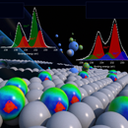
They proved that a system based on molybdenum-on-titania does efficiently catalyze this reaction and represents a promising alternative to current industrial catalysts. This helps eliminating carbon dioxide and producing methanol, which can serve as a "green fuel" or as building blocks for the production of plastics, pharmaceuticals, textiles, etc. The team carried out experiments at the CIRCE-NAPP beamline of the ALBA Synchrotron to characterize the structure of the catalyst.
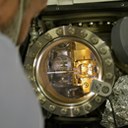
The new beamline of the ALBA Synchrotron, devoted to ARPES technique, is performing its first official experiment. A research group from DIPC-Donostia is analyzing the electronic structure of a 2D material to be used in spintronics and data storage.
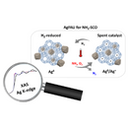
Researchers from the ITQ-UPV-CSIC, in collaboration with ALBA, have explored the use of silver nanoparticles as catalysts for the selective catalytic oxidation of ammonia, one of the main atmospheric pollutants. Thanks to the CLÆSS beamline at ALBA, researchers proved that the active catalyst for the reaction of ammonia to nitrogen and water is metallic silver, instead of silver cations. These findings will contribute to developing new methods for the elimination of ammonia released to the atmosphere in industry and in diesel vehicles.
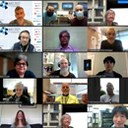
The 12th edition of this workshop has been held from the 5th till the 8th of October 2021, promoting an excellent forum where to exchange ideas and best practices among worldwide experts in accelerators. This workshop, which was initially to take place in 2020, has been focused on the impact of the pandemic in the way accelerators are run.

The ALBA Synchrotron has received today the visit of the General Secretary for Research, Raquel Yotti, and the General Secretary for Research and Universities, Esther Morales, together with their teams.




